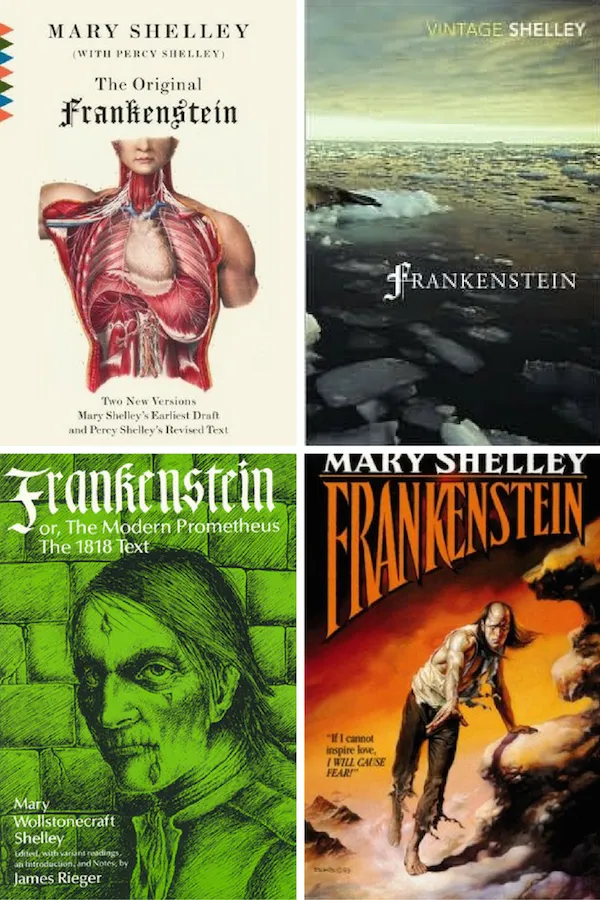Exploring the Intersection of AI and Literature: Frankenstein, Blade Runner, and the Ethics of Knowledge Production
"None but those who have experienced them can conceive of the enticements of science" from Mary Shelley's novel "Frankenstein" highlights the allure of science and the pursuit of knowledge (Shelley 151). Victor Frankenstein, the protagonist of the novel, is consumed by his desire to uncover the secrets of life and death, leading him to create a monstrous being that ultimately brings destruction to his life.
As indicated by the quote, the goal of industrialization, mechanization, and knowledge production can turn out to be a destructive desire. The novel serves as a warning against unorthodox experiments, and its message has endured for centuries. As Professor Vesca points out, "Many book covers, many editions, reframed with time," indicating that Frankenstein's message is still relevant today ("Part 1" 8:42). The story continues to remind us of the dangers of unchecked scientific progress and the responsibility that comes with pursuing knowledge, especially with more and more powerful models that are developed.
Different Covers of Frankenstein
Walter Benjamin raises a concern about mass production in industrialization and how it diminishes the value of art by stripping it of its unique existence.: "Even the most perfect reproduction of a work of art is lacking in one element: its presence in time and space, its unique existence at the place where it happens to be" (Benjamin, Ch. III). Powerful Stable Diffusion models enable the easy and widespread use of AI technology to create art, resulting in a large number of identical or highly similar pieces.
In Blade Runner, the replicants' rebellion against their creators can be seen as a warning of the potential consequences of unchecked industrialization and technological advancement. It raises the question of who holds power and control over these creations and the implications of their actions.
Replicants from Blade Runner
Tyrell the replicant in Blade Runner sets his motto to be "more human than human" (Ridley). This notion of blurring the line between human and machine is supported by Professor Vesna's idea that "cyborg is in between human and machine" ("Part II", 2:44). As AI technology continues to advance, the line between AI and humans becomes increasingly vague, and the concept is becoming more relevant than ever before.
Image URL:
https://s2982.pcdn.co/wp-content/uploads/2016/10/Frankenstein-Covers-1.png.webp
https://duet-cdn.vox-cdn.com/thumbor/0x0:3049x2048/1440x967/filters:focal(1525x1024:1526x1025):format(webp)/cdn.vox-cdn.com/uploads/chorus_asset/file/13762264/fake_ai_faces.png
https://www.nme.com/wp-content/uploads/2017/01/Blade-Runner-original.png
Image Citation (Website where image comes from):
Jensen, Kelly. “40 Great Frankenstein Covers.” BOOK RIOT, 7 Oct. 2016, https://bookriot.com/40-great-frankenstein-covers/.
Vincent, James. “Can You Tell the Difference between a Real Face and an AI-Generated Fake?” The Verge, The Verge, 3 Mar. 2019, https://www.theverge.com/2019/3/3/18244984/ai-generated-fake-which-face-is-real-test-stylegan.
Levine, Nick. “'Blade Runner' Sequel Rumoured to Be Bringing Back Replicant from Original Film.” NME, 6 Jan. 2017, https://www.nme.com/news/blade-runner-sequel-rumoured-bringing-back-replicant-original-film-1936370.
Other Citations:
Benjamin, Walter. "The Work of Art in the Age of Mechanical Reproduction". Translated by J. A. Underwood, Penguin Books, 2008.
Ridley Scott, Vangelis, and Vangelis. Blade Runner. USA, 1982.
Shelley, Mary. Frankenstein. Chapter 4. Lackington, Hughes, Harding, Mavor, & Jones, 1818.
Vesna, Victoria. “Lecture Part 1.” Bruin Media Reserve, uploaded by UC Online, https://bruinlearn.ucla.edu/courses/160989/pages/unit-3-view?module_item_id=5946326
Vesna, Victoria. “Lecture Part 2” Bruin Media Reserve, uploaded by UC Online, https://bruinlearn.ucla.edu/courses/160989/pages/unit-3-view?module_item_id=5946326

:format(webp)/cdn.vox-cdn.com/uploads/chorus_asset/file/13762264/fake_ai_faces.png)

Hello Proud, I really enjoyed reading your blog post! I think you brought up some very strong, compelling points. In particular, I really liked what you said about destructive desire and using the book Frankenstein as an example. I also agree that this pursuit was dangerous, ultimately harmful, and a morally dubious pursuit and play of human life. Also in your example of the Bladerunner, I find that the blurred lines between man and robot also challenges what it means to be human and I wonder what the human’s loss of power over the replicants may reveal in today’s society as AI continues to intertwine into our daily lives and it seems we are losing control of how far its morally okay to take it. Overall, I really found your post and your examples very thought-provoking!
ReplyDelete(also, if that is your cat in your blog page, they are so cute!!!)
Hi Proud, I really enjoyed your blog post, especially what you recapped about book covers, as I used to read lots of dystopian and science fiction novels that revolved around the negative sides of industrialization and mechanization, and some of the worries that came with emerging technology. Although Frankenstein is an old book, the sentiment is still timely, especially with the rise of artificial intelligence, such as Chat GPT. While there is excitement over the functionality of this natural language processing tool, there are also some hesitations, especially when it relates to more "human work" such as art and writing.
ReplyDelete